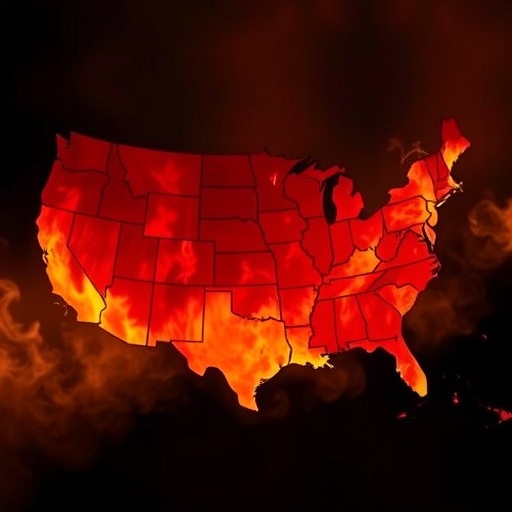
Credit: TalTech
During the first wave of COVID-19, which paralyzed the world in spring, it was initially thought that effective hand washing and 2-metre social distancing would help prevent the highly contagious virus. Scientists, however, have now come to the conclusion that proper indoor ventilation is even more effective. It was also found that SARS-CoV-2 is rather moderately infectious and a person would need to remain in a poorly ventilated room for a considerable amount of time to receive an infectious dose of SARS-CoV-2.
Since the first coronavirus SARS-CoV-1 that broke out in Hong-Kong has been proven to be transmitted across long distances in the air, there is a good reason for the scientists, after hearing the large droplets theory, to raise the question of whether there is a transmission risk of the current SARS-COV-2 virus (causing the coronavirus disease COVID-19) beyond 2 metres.
Head of the TalTech Nearly Zero Energy Buildings Research Group, Professor Jarek Kurnitski says, “Multiple studies provided quickly strong scientific evidence for successful indoor airborne transmission of COVID-19 in inadequately ventilated environments. The virus is transmitted via saliva droplets with a size from 0.5 micrometre up to a few thousand micrometres produced by a person by talking, sneezing, coughing, or even just breathing.”
The point is that small and large droplets act completely differently. Tiny droplets below 5 micrometres do not settle on surfaces, they remain airborne and follow airflow streamlines for tens of meters. Large droplets above 100 micrometres in diameter fall down like rocks – they do not travel farther than 1.5 meters even by coughing. The air exhaled by humans contains mainly droplets with diameter in the range of 1-10 micrometres. Until this spring, it was held in the medical literature and guidelines that droplets larger than 5 micrometres fall down at the distance of up to 2 meters (which is why it was concluded that 2-metre social distancing would ensure complete safety). By now, however, scientists have found out that this was a misconception or even a long-persisting erroneous medical dogma. Aerosol physics shows convincingly that in reality only droplets larger than 50 micrometres fall down at a distance of 2 meters, while smaller ones remain suspended in the air and travel farther. Thus, acknowledging this tenfold error fundamentally changed the understanding of the spread of virus particles and it was realized that the largest number of exhaled droplets travel far and the virus can remain infectious in aerosol particles for up to 3 hours.
“By breaking this medical dogma, researchers also gave an important signal regarding the measures applied to prevent the spread of COVID-19 that led to the paralysis. Measures can and must be applied taking into account the known transmission routes, which is why it is important to know that the disease is transmitted by aerosols, i.e. tiny droplets suspended in air. This means that you can get the virus in two ways: in close contact, where the concentration of aerosols and larger droplets in close proximity of the infected person is very high, or farther away in inadequately ventilated rooms, where the concentration of aerosols remains so high that a person can get an infectious dose for example within an hour spent in the same room with an infected person,” Professor Kurnitski says.
According to academician Kurnitski, the following engineering controls targeting airborne transmission should be applied as a preventive measure in indoor spaces:
- sufficient outdoor air ventilation should be applied as the main control (in principle, it does not matter whether outdoor air enters through a ventilation supply duct or a window, the amount of air is important);
- if the building does not have a functioning ventilation system, portable air cleaners with fine particle filters should be used to clean indoor air;
- in addition, viral contamination can be deactivated by applying short-wavelength ultraviolet (UV-C) light, which is used for example in certain hospital settings.
Ventilation systems with recirculation air that circulate a part of the extract air from a room into the supply air duct, leaving virus particles recirculating in the ventilation system, pose a particular challenge. It is necessary to increase outdoor air supply in such systems. If a system cannot be switched to fully outdoor air, filtration of extract air must be improved by installing more effective filters.
According to the generally recognised infection control classification, the impact of engineering controls is considered to be greater than that of the second most important, currently however most widely applied administrative measures (closing of institutions, canceling of events, etc.). Wearing personal protective equipment (e.g. face masks) is considered to be the least effective measure in preventing the spread of the virus.
A total of 36 researchers from all over the world published the article on the topic titled “How can airborne transmission of COVID-19 indoors be minimised?”. In this research group, Estonian researchers were represented by a civil engineer from TalTech, academician Jarek Kurnitski. Prior to publication of the article, a joint petition on the same topic was signed by 239 scientists and submitted to the World Health Organisation (WHO) with a request to acknowledge that the virus is transmitted by aerosols so that ventilation solutions could be implemented to prevent the spread of the virus. As a result, the WHO and other health authorities acknowledged that COVID-19 is spread not only by large droplets but also by tiny aerosol particles remaining in the air for hours and traveling tens of meters.
###
Recently Professor Kurnitski received an exceptional target grant of the Estonian Research Council for his further research aimed at solving the problems caused by the SARS-CoV-2 virus.
Source: 09.2020 Environmental International “How can airborne transmission of COVID-19 indoors be minimised?” https:/
Additional information: Head of the TalTech Nearly Zero Energy Buildings Research Group, Professor Jarek Kurnitski [email protected]
Kersti Vähi, TalTech Research Communications Officer
Media Contact
Jarek Kurnitski
[email protected]
Related Journal Article
http://dx.





